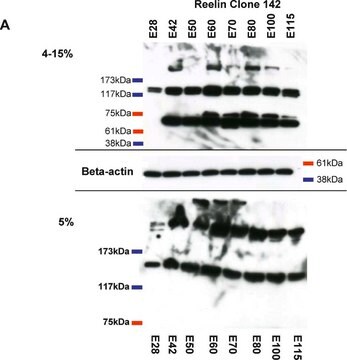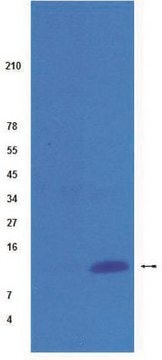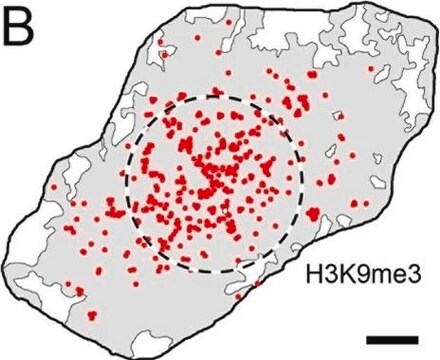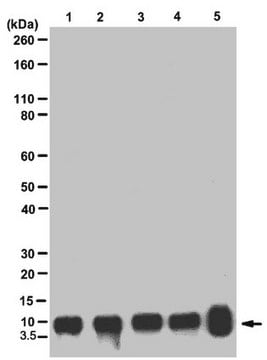05-1355
Anti-acetyl Histone H4 (Lys5/8/12/16) Antibody, clone 3HH4-4C10
ascites fluid, clone 3HH4-4C10, from mouse
Synonim(y):
H4KAc, Histone H4 (acetyl), H4 histone family, member N, H4 histone, family 2, histone 2, H4, histone 2, H4a, histone IV, family 2, histone cluster 2, H4a
About This Item
Polecane produkty
pochodzenie biologiczne
mouse
Poziom jakości
forma przeciwciała
ascites fluid
rodzaj przeciwciała
primary antibodies
klon
3HH4-4C10, monoclonal
reaktywność gatunkowa
human
reaktywność gatunkowa (przewidywana na podstawie homologii)
mouse (based on 100% sequence homology), rat (based on 100% sequence homology)
metody
immunocytochemistry: suitable
western blot: suitable
izotyp
IgG1κ
numer dostępu NCBI
numer dostępu UniProt
Warunki transportu
dry ice
docelowa modyfikacja potranslacyjna
acetylation (Lys5/Lys8/Lys12/Lys16)
informacje o genach
human ... H4C1(8359)
mouse ... H4C1(326619)
Opis ogólny
Specyficzność
Immunogen
Zastosowanie
1:500 dilution from a representative lot detected Histone H4 in A431 and HeLa cells.
Epigenetics & Nuclear Function
Histones
Jakość
Western Blot Analysis: 1:2,000 dilution of this antibody detected Histone H4 on 10 µg of HeLa acid extract lysate.
Opis wartości docelowych
Postać fizyczna
Przechowywanie i stabilność
Handling Recommendations: Upon receipt and prior to removing the cap, centrifuge the vial and gently mix the solution. Aliquot into microcentrifuge tubes and store at -20°C. Avoid repeated freeze/thaw cycles, which may damage IgG and affect product performance.
Komentarz do analizy
HeLa acid extract lysate
Oświadczenie o zrzeczeniu się odpowiedzialności
Not finding the right product?
Try our Narzędzie selektora produktów.
Kod klasy składowania
12 - Non Combustible Liquids
Klasa zagrożenia wodnego (WGK)
WGK 1
Temperatura zapłonu (°F)
Not applicable
Temperatura zapłonu (°C)
Not applicable
Certyfikaty analizy (CoA)
Poszukaj Certyfikaty analizy (CoA), wpisując numer partii/serii produktów. Numery serii i partii można znaleźć na etykiecie produktu po słowach „seria” lub „partia”.
Masz już ten produkt?
Dokumenty związane z niedawno zakupionymi produktami zostały zamieszczone w Bibliotece dokumentów.
Nasz zespół naukowców ma doświadczenie we wszystkich obszarach badań, w tym w naukach przyrodniczych, materiałoznawstwie, syntezie chemicznej, chromatografii, analityce i wielu innych dziedzinach.
Skontaktuj się z zespołem ds. pomocy technicznej








